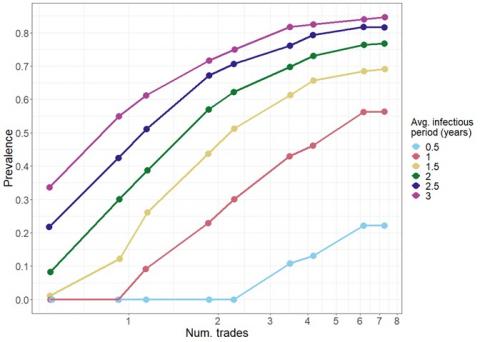Leveraging trade to assist livestock disease control
Endemic livestock diseases such as bovine tuberculosis (bTB) and paratuberculosis (paraTB) present persistent economic and production issues to farms. A dynamic, agent-based trading model was developed to capture farm trading behaviour and assess the potential for trade-based controls to assist typical disease control measures.
Challenges
Cattle trading systems are complex, and the behaviours of individual farms affect trading patterns. Trade facilitates the spread of disease between farms and permits long-term persistence. It is crucial, therefore, to understand the mechanisms by which farm trading behaviours develop and change, and how these behaviours impact the effectiveness of disease control measures.
BioSS’ role
In collaboration with researchers from Scotland’s Rural College (SRUC), we developed a stochastic agent-based model in which dynamic farm trading behaviours are captured via farm-level current demand and available supply. Fitting our model to the Scottish cattle trading system, we found that farms rapidly adapt their trading behaviours in response to policy changes that reduce trading frequency, resulting in new emergent trading networks. This adaptation hinders the potential reductions in between-herd disease prevalence. Crucially, however, these trade-based controls can be combined with typical biosecurity measures resulting in significantly greater reductions in prevalence than might otherwise be expected.
Future developments
Our results highlight the potential for nonintrusive trade-based controls to assist in reducing disease prevalence. Future work will further investigate the extent to which trade facilitates disease spread between farms as well as the potential for novel trade-based controls. In particular, we will model voluntary trading health schemes to understand how breaking down the trading network can hinder the spread of disease as well as the resulting impacts on farm trading behaviours. We plan to investigate the dynamics of trading scheme growth and the barriers hindering farm uptake, and to find optimal scheme sizes in which farm business requirements are maintained while maximising reductions in disease prevalence.
Acknowledgements
This work was done in collaboration with Mike Hutchings and Ross Davidson at SRUC, and is funded under the Scottish Government’s Rural and Environment Science and Analytical Services Division (RESAS)


